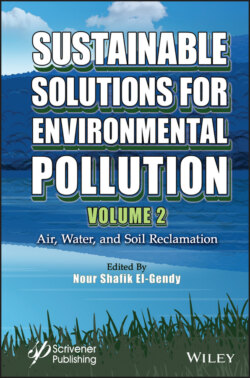Читать книгу Sustainable Solutions for Environmental Pollution, Volume 2 - Группа авторов - Страница 20
1.5 Bank Filtration for Water Treatment
ОглавлениеBank filtration (BF) process occurs when the hydraulic head in surface water is higher than in underlying groundwater (Figure 1.3).
Figure 1.3 The basic principle of bank filtration.
During the BF, the four types of filters act together and their interactions are very strong to remove particles, biodegradable organic compounds, trace organics, microorganisms, as well as ammonia and nitrates. It is a reliable, natural, and multi-objective treatment process applied to rivers or lakes (Gillefalk et al., 2018). BF has the potential to replace or support other treatment process by providing a robust barrier within a multi-barrier system and also reducing the costs of water treatment in general (Sharma and Amy, 2009). It is known that BF is an efficient and well accepted treatment method of surface water in Europe. For more than 100 years, riverbank filtration has been used as a treatment method in European countries for public and industrial water supply along Rhine, Elbe, and Danube rivers (Grischek et al., 2003). There exist several mechanisms for improvement of water quality during BF. During infiltration, the surface water moves through the soil and aquifer sediments. During the latter process, surface water is subjected to a combination of physical, chemical, and biological processes such as 1) filtration, 2) solution-precipitation, 3) ion-exchange, 4) sorption-desorption, 5) complexation, 6) redox reactions, 7) microbial biodegradation, and 8) dilution that significantly improve water quality. The main advantages and limitations of BF systems are listed below (Ray et al., 2002; Gale, 2005).
Advantages:
– BF is a natural treatment process, which avoids or reduces the use of chemicals and produces biologically stable water as end-product;
– BF improves water quality by removing particles (suspended solids), organic pollutants, microorganisms, metals, and nitrogen from the surface water;
– BF dampens concentration peaks associated with spills (in river/lake) as well as dampens temperature peaks;
– BF replaces or supports other surface water treatment processes by providing a robust barrier and reduces the overall cost of surface water treatment.
Limitations:
– BF is site specific (rivers or lakes) and is feasible only when the local hydrogeological conditions are favorable and known;
– Leaching of the aquifer materials can occur under reducing conditions, sometimes leading to increased concentration of iron and manganese in extracted water;
– Another problem is clogging of the aquifer due to accumulation of suspended matter that is filtered out when river/lake water enters the aquifer;
– BF and groundwater recharge may be only a limited barrier for certain contaminants that pass through the system;
– Influence of surface water and operation on quality is poorly known.
